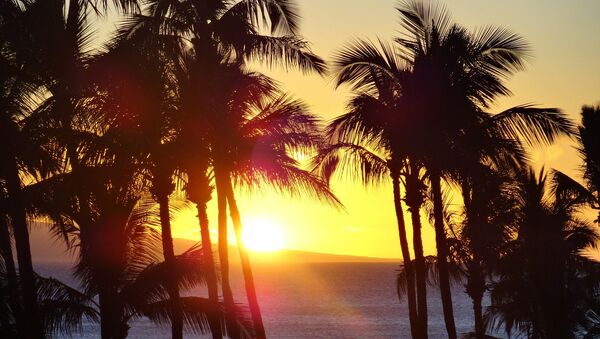Kamilo Point, a beach in the rural Ka'u district of the Big Island of Hawaii, is a wasteland according to experts. Despite its pockets of lava rock and beautiful natural wildlife, the ocean's currents are so powerful that the winds deposit thousands of pounds of man-made trash on the beach every year.
Kamilo, also known as "plastic beach," has been know to host hair brushes, cigarette lighters, shards of plastic as well as water bottles, all of which wash up on the beach every week.
Experts claim it's the graveyard for the world's junk and a powerful reminder of what plastic can do, if not recycled or discarded of correctly.
The Hawaii Wildlife Fund (HWF), discovered that in one weekend alone in April, over 15,000 pounds worth of trash, nylon nets and fishing line was collected from Kamilo beach.
So why is there so much trash on Kamilo beach and where is it all coming from?
#Pacific #pollution #KamiloPoint #Hawaii https://t.co/CwarOIER8w
— Kalju Laid (@KaljuLaid) May 1, 2017
Well, it appears the Kamilo is relatively close to the eastern Pacific garbage patch, which is part of the massive convergence of marine litter known as the Great Pacific Garbage Patch.
The easternmost concentration of trash is midway between the Californian coast and the eastern shores of Hawaii.
The trash that ends up on Kamilo beach is a result of oceanic and atmospheric pressures that push the items in the ocean — such as sea life, pollution and tiny pieces of plastic — into one general area.
According to Carey Morishige, formally of the National Oceanic and Atmospheric Administrations' Marine Debris Program, it is like a "soup of pollution," which includes plastic debris, that floats freely on the ocean's surface and then ends up on the beach.
As the most easterly island, Kamilo Point and the larger Ka'u coast on Hawaii island have always acted as the perfect colander for items drifting across the ocean.
Megan Lamson, a survey diver for the state's Division of Aquatic Resources, said that the area is prone to the collection of more rubbish due to the powerful currents.
"Kamilo itself means 'whirling, swirling, twisting currents," Lamson said.
Lamson also pointed out that Kamilo's pollution problem can only be handled at a global level.
"The solution is not to encourage more people to come to Kamilo to clean up. The solution will come with [humans] reducing our dependence to plastics, especially single-use items that we can do without."
And with an estimated 8 million metric tons of discarded plastics turning up in the ocean every year, experts say humans are the only ones who can stop it from pouring into the sea.




